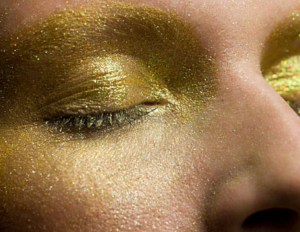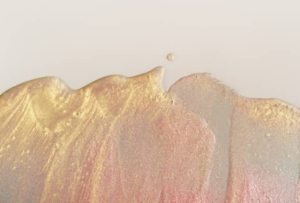The Hidden Cost of Shimmer in Makeup

In the world of beauty, shimmering eyeshadows, radiant highlighters, and sparkling lip glosses are often the go-to products for achieving a glamorous and polished look. However, behind the glitz and glamour lies a dark reality that many consumers are unaware of – the hidden cost of mica mining and child labor. Mica, a mineral widely used in the cosmetics industry for its shimmering properties, is often associated with unethical mining practices, including the exploitation of child labor. In this eye-opening beauty blog, we delve into the intricacies of mica mining, shed light on the impact of child labor, and explore the ethical alternatives that can help consumers make more informed choices.
The Beauty of Mica
Mica, a naturally occurring mineral, is prized in the beauty industry for its ability to impart a luminous and reflective quality to cosmetics. It is a key ingredient in a variety of makeup products, from eyeshadows and blushes to highlighters and lipsticks. Mica’s fine particles create a shimmering effect that adds dimension and radiance to makeup, making it a popular choice for both high-end and drugstore beauty brands.
Behind the radiant glow of shimmering makeup lies a troubling truth – the exploitation of vulnerable communities, particularly children, in the process of mica mining. The allure of mica’s iridescent properties has inadvertently cast a shadow over ethical considerations, creating an industry plagued by human rights abuses.
Hazardous Working Conditions:
Children as young as six find themselves toiling in the depths of mica mines, subjected to hazardous conditions that compromise their health and well-being. These mines, often located in economically disadvantaged regions of countries like India and Madagascar, become breeding grounds for exploitation. The harsh reality is that these children are exposed to harmful substances, endure physically demanding labor, and face the perpetual risk of accidents in the pursuit of extracting mica.
A Cycle of Poverty:
Compounding the issue is the vicious cycle of poverty that ensnares these young workers. Denied access to education, these children have limited opportunities for a brighter future. Instead, they become trapped in a cycle of exploitation, forced to contribute to their families’ meager incomes at the expense of their own development.
Health Consequences:
The health implications of mica mining on child laborers are severe. Inhaling fine mica dust, laden with toxic minerals, poses a significant risk to respiratory health. Cases of lung diseases and ailments related to prolonged exposure are alarmingly prevalent. Moreover, the lack of protective gear exacerbates these health risks, leaving children vulnerable to long-term consequences.
Disrupted Childhood:
While their peers around the world enjoy the privilege of education, recreation, and carefree moments, children in mica mines are robbed of their childhoods. The juxtaposition of carefree innocence against the grueling reality of mica mining paints a stark picture of the hidden costs behind the shimmering allure of makeup.
Limited Regulatory Oversight:
One of the challenges exacerbating this issue is the limited regulatory oversight in many mica-producing regions. Insufficient monitoring and enforcement mechanisms allow exploitative practices to persist unchecked. As a result, companies operating in these areas often evade accountability, and the true extent of the problem remains concealed.

The Global Impact
Interconnected Supply Chains:
The mica supply chain is a labyrinthine network that spans continents, making it challenging to trace the exact origin of the mineral used in cosmetics. Brands often source mica through intermediaries and suppliers, further complicating the task of ensuring ethical practices. This lack of transparency allows unethical suppliers to operate with impunity, exploiting vulnerable communities without fear of repercussion.
Unintentional Complicity:
Consumers worldwide inadvertently contribute to the demand for mica extracted through unethical means. The cosmetics industry’s reliance on mica as a key ingredient in various products creates a vast and insatiable market. Despite growing awareness, the lack of clear labeling and information about the mica supply chain leaves consumers unknowingly complicit in a cycle of exploitation.
Cross-Border Exploitation:
The interconnectedness of the beauty industry means that the consequences of mica-related child labor extend far beyond the borders of individual countries. The mineral extracted in one region may find its way into products distributed globally. This cross-border exploitation reinforces the need for an international effort to address the issue comprehensively.
Despite growing awareness of the issue, the beauty industry faces challenges in establishing comprehensive regulations and ensuring accountability throughout the supply chain. The complex network of suppliers, manufacturers, and brands makes it difficult to monitor every step of the mica production process. While some brands have committed to responsible sourcing, the lack of standardized regulations and enforcement mechanisms allows unethical practices to persist.

Ethical Alternatives and Industry Initiatives
Exploring Ethical Mica Sources:
In response to the ethical concerns surrounding mica mining, some beauty brands are actively seeking alternatives that prioritize responsible sourcing. Ethical mica sources, often characterized by transparency, fair labor practices, and community development initiatives, have become a focal point for brands committed to breaking the cycle of exploitation.
Synthetic Mica:
Synthetic mica, or lab-grown mica, is emerging as a viable ethical alternative. Produced in controlled environments, synthetic mica eliminates the risk of child labor and environmental damage associated with traditional mining practices. Beauty brands embracing synthetic mica can offer shimmering products without contributing to the exploitation prevalent in natural mica production.
Responsible Mica Initiatives:
Industry-wide initiatives, such as the Responsible Mica Initiative (RMI), bring together brands, NGOs, and other stakeholders to collectively address the challenges of mica-related child labor. By fostering collaboration and sharing best practices, these initiatives aim to create a framework for responsible sourcing, ethical labor practices, and community development in mica-producing regions.
Direct Supplier Relationships:
Beauty brands committed to ethical alternatives often establish direct relationships with mica suppliers. By bypassing intermediaries and engaging with suppliers on a personal level, brands can gain greater control over their supply chain. Direct relationships facilitate transparency, allowing brands to verify ethical practices and uphold stringent standards.
Third-Party Audits:
To ensure adherence to ethical sourcing practices, some beauty brands conduct regular third-party audits of their mica supply chain. Independent auditors assess working conditions, labor practices, and environmental impact, providing an objective evaluation of a brand’s commitment to responsible sourcing. Transparent audit reports offer consumers insight into a brand’s ethical initiatives.
Community Development Programs:
Beyond ethical sourcing, beauty brands are increasingly recognizing the importance of contributing to the well-being of communities affected by mica mining. Community development programs, supported by brands, aim to improve living standards, provide access to education and healthcare, and empower local populations to break free from the cycle of poverty.
Certification Programs:
Certification programs focused on ethical mica sourcing provide consumers with a recognizable symbol of responsible practices. Brands obtaining certifications demonstrate their commitment to transparency and ethical conduct. Certifications not only build consumer trust but also contribute to the broader movement for industry-wide change.
Transparent Supply Chain Communication:
Brands embracing ethical alternatives prioritize transparent communication regarding their mica supply chain. Transparent communication includes disclosing the source of mica, detailing the steps taken to ensure ethical practices, and sharing the brand’s commitment to eradicating child labor. Open dialogue fosters trust and allows consumers to make informed choices.
Consumer Education Initiatives:
Educating consumers about the ethical implications of mica mining and the availability of responsible alternatives is crucial. Beauty brands can play a role in consumer education by incorporating information about their sourcing practices into marketing materials, product packaging, and online platforms. Informed consumers become advocates for ethical beauty practices.
The Role of NGOs:
Non-governmental organizations (NGOs) and advocacy groups actively engage with the beauty industry to drive change. Through partnerships, campaigns, and initiatives, NGOs contribute to raising awareness, influencing industry practices, and holding brands accountable for their sourcing decisions. Collaboration with NGOs strengthens the collective effort to eradicate child labor from the beauty supply chain.

Educational Initiatives and Industry Collaboration
Consumers play a crucial role in driving change within the beauty industry. By making informed choices and supporting brands committed to ethical sourcing, consumers can contribute to the demand for responsibly mined mica. Several certifications, such as the Ethical Mica Sourcing Standard, aim to provide assurance to consumers that the mica in their beauty products has been ethically sourced.
Additionally, consumers can advocate for transparency within the beauty industry, demanding clearer labeling and supply chain information. Social media campaigns, petitions, and public awareness initiatives have the potential to exert pressure on brands to prioritize ethical practices and eradicate child labor from their supply chains.
Educating consumers about the realities of mica mining and child labor is paramount to fostering change. Beauty brands can contribute by incorporating educational materials into their marketing campaigns, highlighting their commitment to responsible sourcing, and actively participating in initiatives that address the root causes of child labor in mica-producing regions.
Collaboration between brands, NGOs, and government bodies is essential for developing effective solutions to eradicate child labor and improve working conditions in mica mines. By sharing best practices, investing in community development, and supporting sustainable alternatives, the beauty industry can work towards a more ethical and responsible future.
The hidden cost of shimmer in makeup is a stark reality that demands our attention and action. As consumers, we have the power to influence change by making conscious choices and supporting brands that prioritize ethical sourcing. The beauty industry, in turn, must embrace transparency, accountability, and collaboration to eradicate child labor from the mica supply chain.
Let us envision a future where the beauty of our makeup is not tarnished by the exploitation of vulnerable communities. By shedding light on the dark side of mica mining and advocating for responsible practices, we can collectively work towards a beauty industry that not only enhances our external radiance but also reflects the beauty of compassion, justice, and ethical integrity.

